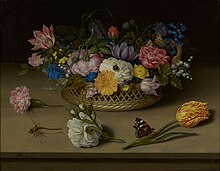A DOLL
Since ancient times, dolls have played a central role in magic and
religious rituals, or used as representations of a deity. Dolls have
also traditionally been toys for children. Dolls are also collected by
adults, for their nostalgic value, beauty, historical importance or
financial value.
Antique dolls which were originally made as children's playthings have become collector's items. Nineteenth-century
bisque dolls made by French manufacturers such as Bru and
Jumeau may be worth almost $22,000 today.
Dolls have traditionally been made as crude, rudimentary playthings as well as with elaborate, artful design.
They have been created as
folk art in cultures around the globe, and in the 20th century,
art dolls began to be seen as
high art. Artist
Hans Bellmer made
surrealistic dolls that had interchangeable limbs in 1930s and 1940s
Germany as opposition to the
Nazi party's idolization of a perfect Aryan body.
East Village artist
Greer Lankton became famous in the 1980s for her theatrical window displays of drug addicted, anorexic and mutant dolls.
Lifelike or
anatomically correct dolls
are used by health professionals, medical schools and social workers to
train doctors and nurses in various health procedures or investigate
cases of sexual abuse of children. Artists sometimes use jointed wooden
mannequins in drawing the human figure.
In Western society, a gender difference in the selection of toys has been observed and studied.
Action figures that represent traditional masculine traits are popular with boys, who are more likely to choose toys that have some link to
tools,
transportation,
garages,
machines and
military equipment.
Dolls for girls tend to represent feminine traits and come with such accessories as
clothing, kitchen appliances,
utensils,
furniture and
jewelry.
[50][51][52]
Pediophobia is a fear of dolls or similar objects.
Psychologist Ernst Jentsch theorized that
uncanny feelings arise when there is an intellectual uncertainty about whether an object is alive or not.
Sigmund Freud further developed on these theories.
Japanese roboticist
Masahiro Mori expanded on these theories to develop the
uncanny valley
hypothesis. If an object is obviously enough non-human, its human
characteristics will stand out, and be endearing. However, if that
object reaches a certain threshold of human-like appearance, its
non-human characteristics will stand out, and be disturbing.
Doll hospitals
A doll hospital is a workshop that specializes in the
restoration or repair of dolls.
Doll hospitals can be found in countries around the world.
One of the oldest doll hospitals was established in
Lisbon, Portugal in 1830,
and another in
Melbourne, reputedly the first such establishment in Australia, was founded in 1888.
There is a Doll Doctors Association in the United States.
Henri Launay, who has been repairing dolls at his shop in northeast
Paris for 43 years, says he has restored over 30,000 dolls in the course
of his career. Most of the clients are not children, but adults in
their 50s and 60s.
Some doll brands, such as
American Girl and
Madame Alexander also offer doll hospital services for their own dolls.
Dolls and children's tales
Many books deal with dolls tales like
Wilhelmina. The adventures of a dutch doll. By Nora Pitt-Taylor, pictured by Gladys Hall.
Rag dolls have featured in a number of children's stories, like the 19th century character
Golliwogg in
The Adventures of two Dutch Dolls and a Golliwogg by Bertha Upton and Florence K. Upton
and
Raggedy Ann in the books by
Johnny Gruelle, first published in 1918.
The Lonely Doll is a 1957 children's book by Canadian author
Dare Wright. The story, told through text and photographs, is about a doll named Edith and two teddy bears.




